Transformations
This module builds on: M1 Coordinates
Transformations change the size or position of shapes. Scale factors can change the size of the shape.
There are 4 transformations of 2D shapes that you should know:
- Translation - moving a shape in a straight line
- Reflection - flipping a shape to create a mirror image
- Rotation - turning a shape
- Enlargement - changing the size of a shape by a scale factor
In the exam you may be asked to draw and/or describe transformations.
Translation
When a shape is translated, it is moved up or down and/or left or right. Every point in the shape must be moved in exactly the same way.
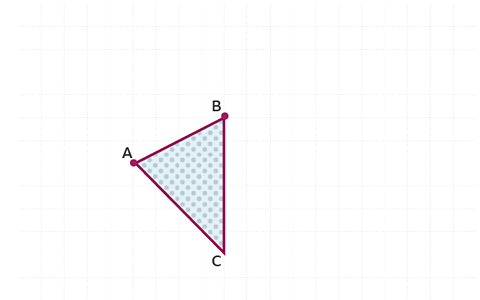
Example
Draw the translation of the triangle 5 right and 3 up and label it P.

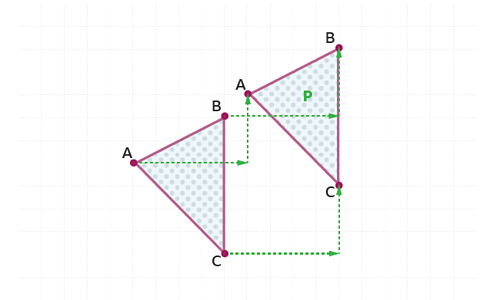
Answer:
From each point count 5 squares right and 3 squares up.

Example
Describe the transformation of the triangle PQR onto P’Q’R’.
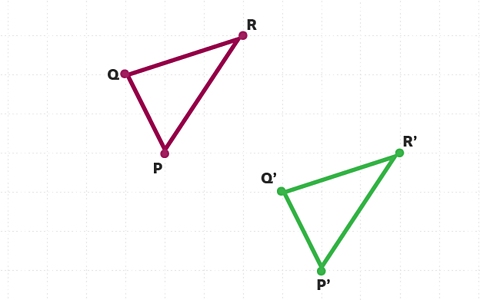
Answer:
Triangle PQR has been translated 4 squares right and 3 squares down.
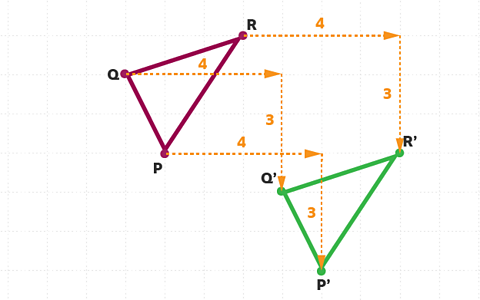
There will be a mark for writing translation and a mark for writing 4 right and 3 down.
Reflection
When a shape is reflected it is flipped. The line of reflection could be the x axis or the y axis.
To reflect a shape
- Choose a point on the shape and count how far it is from the line of reflection.
- Count the same amount on the other side of the line and plot the point.
- Repeat steps 1 and 2 for each point in the shape and join the points.
Example
Reflect the triangle PQR in the line.
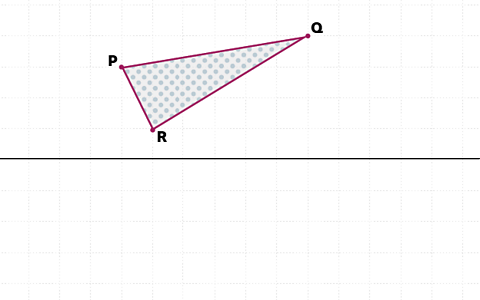
- Choose a point on the shape and count how far it is from the line of reflection.
The line is down 3 squares from P - Count the same amount on the other side of the line and plot the point.
The reflection of P is 3 squares below the line. - Repeat steps 1 and 2 for each point in the shape and join the points.
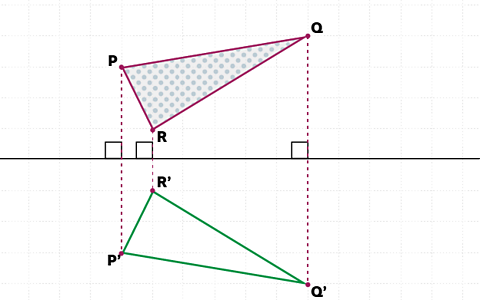
Example
Describe the transformation which maps shape A to shape B.
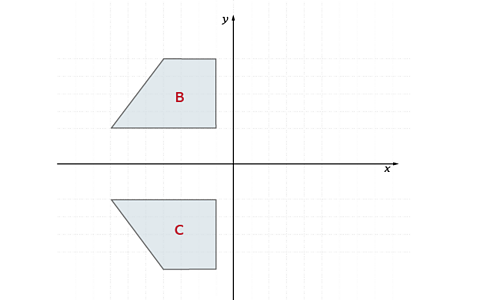
Answer:
A reflection in the x axis.
There will be a mark for writing reflection and a mark for writing in the x axis.
Example
Describe the transformation which maps shape S to shape T.
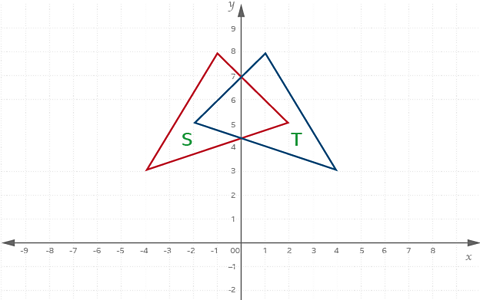
Answer:
A reflection in the y axis.
Rotation
When a shape is rotated it is turned about a fixed point, the centre of rotation.
Three pieces of information are necessary to rotate a shape:
- The centre of rotation, at M5 this will always be (0, 0).
- The angle of rotation, 90° or 180°
- The direction of rotation, clockwise (CW) or anticlockwise (ACW).
You can use tracing paper to help, this will always be available for you in the exam but you may need to ask for it.

Image caption, The shape has been rotated 90° (a quarter turn) clockwise about the centre of rotation
Image caption, The shape has been rotated 180° (a half-turn) about the centre of rotation
Image caption, The shape has been rotated 90° (a quarter turn) anticlockwise about the centre of rotation
1 of 3
Example
Rotate the triangle PQR 90° anticlockwise about the origin.
Tracing paper can be used to rotate a shape.
Trace the shape and the centre of rotation.
Hold down the tracing paper with a pencil on the centre of rotation.
Rotate the tracing paper and copy the image.
Question
Describe the transformation which maps shape ABCD to shape A’B’C’D’.
Each corner of the image A'B'C'D' is the same distance from the origin as the original shape. The origin is the centre of rotation.
The rectangle ABCD has been rotated 180° about the origin (the direction is not required because it is a half turn).
There will be a mark for writing rotation, a mark for writing 180° and a mark for writing centre (0, 0).
Enlargement
Enlarging a shape changes its size.
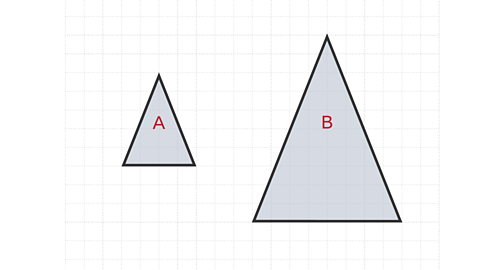
The base of A is 4 and the height is 5.
The base of B is 8 and the height is 10.
Shape B is an enlargement of shape A with scale factor 2.
Centre of enlargement
A shape can be enlarged from a point, this point is referred to as the centre of enlargement.
To find the centre of enlargement lines are ruled from each of the vertices on the enlarged shape through the corresponding vertices on the original shape and beyond.
The point where the lines meet is the centre of enlargement.
To enlarge a shape by a scale factor from a centre point follow these steps:
Count the number of squares horizontally and vertically from the centre of enlargement to one vertex on the original shape.
Multiply these distances by the scale factor.
Go back to the centre of enlargement, count the enlarged distances in the horizontal and vertical directions and mark the vertex.
Repeat with the other vertices on the original shape to find the vertices on the enlarged shape.
Example
Enlarge this triangle by scale factor 3 from the centre marked with an A.
- Up 1, across 3.
- Up 3 x 1, across 3 x 3
- Count up 3 and across 9
- Repeat with the other vertices
Test yourself
More on M5: Geometry and measures
Find out more by working through a topic